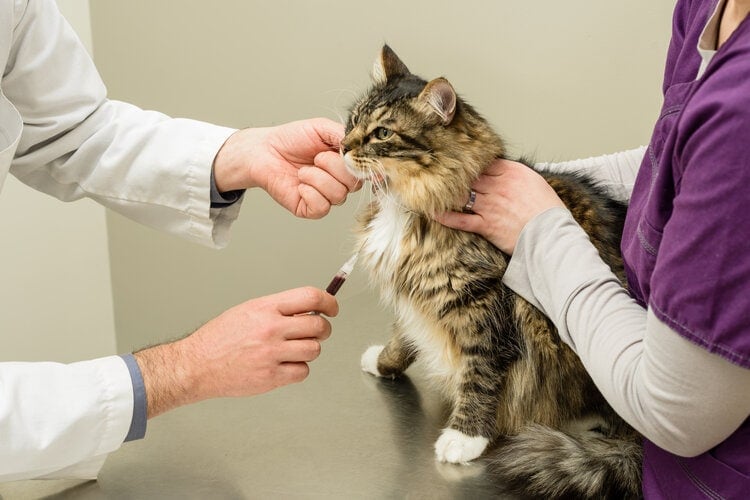How to Make a Cat Sneeze to Clear Its Nose: 5 Vet-Approved Steps
Updated on
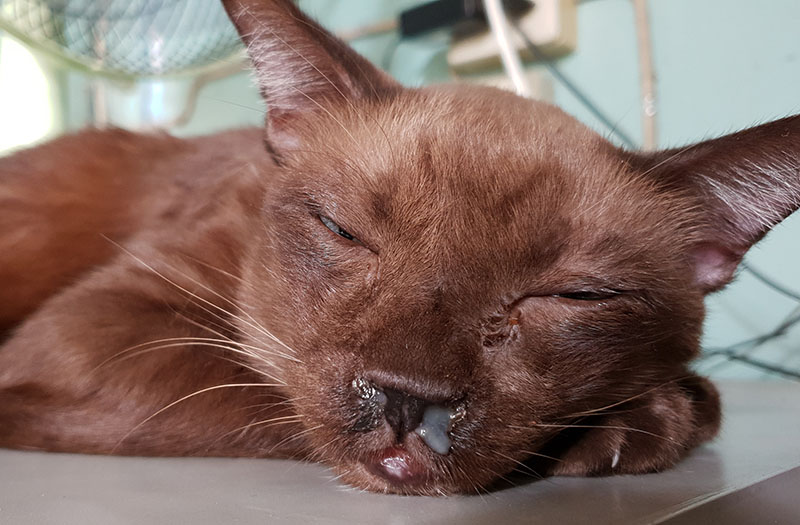
Sneezing is a natural reflex that clears debris and irritants from the nose. While cats can sneeze on their own, there are times when owners may need to intervene to help their pets clear their noses. In fact, knowing how to make a cat sneeze, as well as when it is necessary to do so, is essential for the health and well-being of your beloved pet! So, here’s a step-by-step guide for relieving your feline friend’s stuffy nose — and to know when it’s time to see your vet.
 Before You Start: What You Need to Know
Before You Start: What You Need to Know
Before trying these techniques, make sure your cat doesn’t have a more serious infection or condition preventing them from clearing their nasal passages.
Look for signs of inflammation, such as a runny nose, excessive sneezing, greenish or yellowish secretions, fever, loss of appetite, and lethargy.
Be aware that many things can cause inflammation and congestion in your cat’s nose. For example, your feline friend may have caught a cold due to viruses like feline herpesvirus and feline calicivirus.
Other common causes include allergies, a foreign body stuck in the nasal passages, a bacterial or fungal infection, or even dental disease. In older cats, a tumor (neoplasia) can also cause the nasal passages to become inflamed and irritated, which can cause the cat to sneeze excessively.
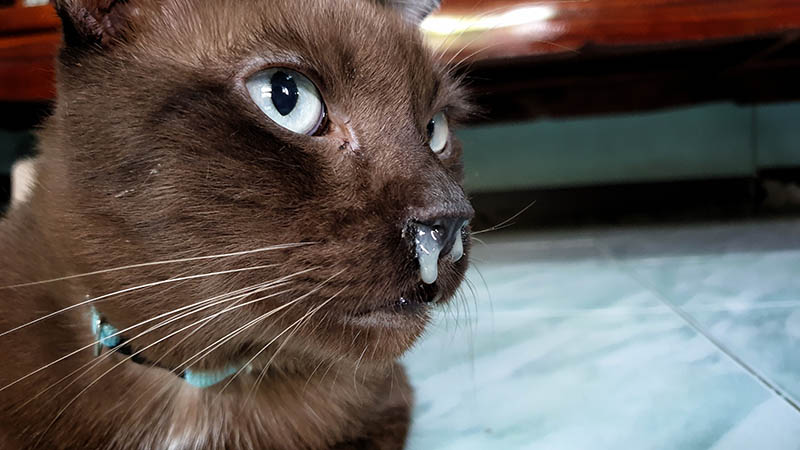
When Should You Consult a Veterinarian?
In general, healthy cats do not need medical treatment to recover from a cold or other types of mild upper respiratory tract infection. These illnesses typically resolve on their own, and signs usually disappear after 7 to 10 days of incubation.
However, if your pet is having difficulty breathing or has more severe signs, you should consult your veterinarian immediately. The latter will be able to examine your feline companion and determine the cause of their respiratory disorder more precisely by carrying out physical, blood, or dental examinations.
Once cleared by your vet, you can help your cat recover at home and clear their nose with the following methods.
The 5 Steps for Making a Cat Sneeze to Clear Its Nose
1. Make a Kitty Burrito
Your feline companion probably isn’t fond of muzzle cleaning — and honestly, who can blame them? So, to keep handling safe and comfortable for you and your cat, learn how to make a kitty burrito by carefully wrapping your pet in a towel. This will greatly facilitate exams and treatments that need to be carried out at home.
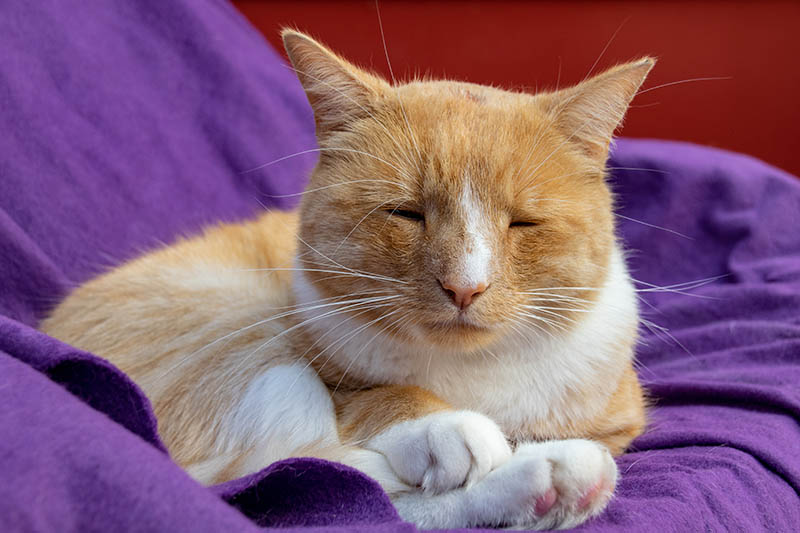
2. Clean Your Cat’s Muzzle and Eyes
Use a cotton ball soaked in warm water to gently remove the mucus from your kitty’s nose and eyes. If your cat is calm and lets you do this, you won’t need to wrap them in a burrito. Repeat this step a few times a day for as long as your pet is congested.
3. Use a Humidifier
A humidifier is an essential addition in homes where the air is dry, especially in winter. Your furry friends can also benefit greatly if they are congested. A humidifier works by releasing water vapor into the air, which keeps the sinuses moist and relieves irritation in the airways. This will make it easier for your cat to breathe and expel mucus when sneezing.
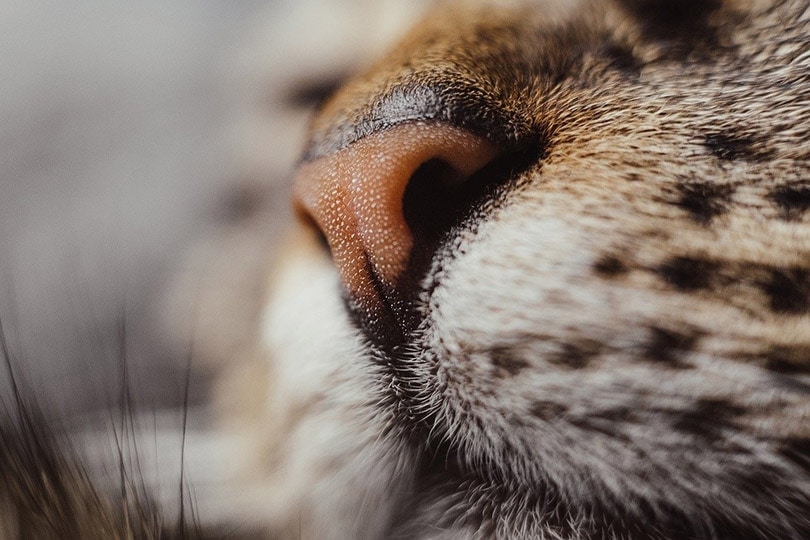
4. Perform Nebulization on Your Cat
You can also help your cat sneeze out secretions with steam nebulization. This technique involves delivering a fine mist of saline solution or water into your pet’s lungs to help reduce congestion. This increases moisture in the lungs, which can help loosen and clear secretions more effectively.
To nebulize your cat, take them into the bathroom, and close the door and windows. Run a hot shower to fill the room with steam, and leave your cat in the room for about 15 minutes (it’s best to stay with them to avoid adding stress to the experience). Steam nebulization can be done once a day, as recommended by your veterinarian.
Side note: To make things easier, you can keep your cat in the bathroom while you take a long, hot shower!
5. Keep Your Cat Hydrated
Drinking plenty of water will help reduce the amount of mucus that builds up in your pet’s airways. To help your finicky kitty drink more water, you can buy a water fountain, use bowls with shallower dimensions (so your cat doesn’t get their whiskers wet), and add more canned wet food to their diet.
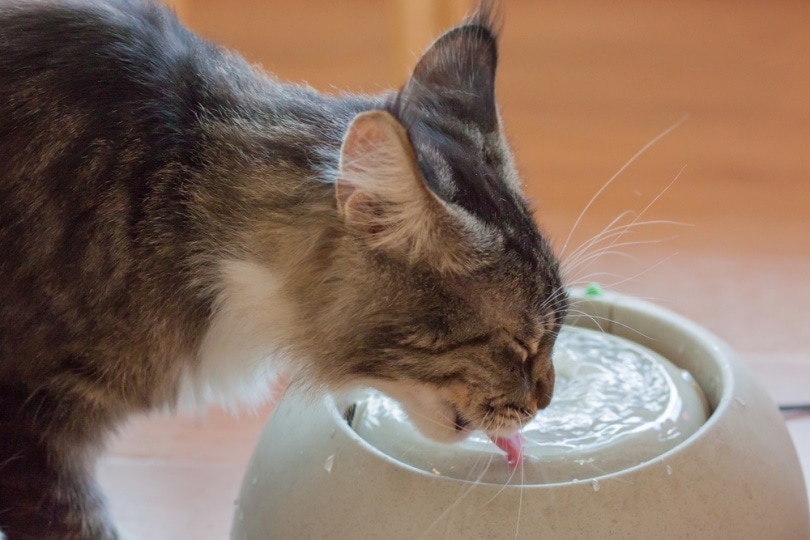
 Important Things to Keep in Mind
Important Things to Keep in Mind
Don’t expose your cat to potential irritants and allergens like pepper, dust, or pollen in an effort to make them sneeze. This will only irritate their nasal passages even more.
You may also be tempted to use a saline nasal spray to relieve dryness and congestion to stimulate sneezing. However, although non-medicated saline nasal sprays are generally available over the counter, it is strongly recommended that you seek advice from your veterinarian before trying this method. Moreover, your cat may not tolerate this treatment, especially if you don’t have clear guidance on how best to do it.
 Final Thoughts
Final Thoughts
There are several methods that you can use at home to help your cat clear their stuffy nose. The best one will depend on several factors, including the severity of their signs and whether they are a kitten or an older, more sedentary cat. Cleaning your pet’s nose, using steam nebulization, keeping them hydrated, and adding a humidifier to your home are all helpful methods for getting your cat to clear their nasal secretions.
However, even if you think that the problem is minor, it’s always best to consult your veterinarian to be sure.
Featured Image Credit: RJ22, Shutterstock

 Before You Start: What You Need to Know
Before You Start: What You Need to Know Important Things to Keep in Mind
Important Things to Keep in Mind

